Interview: Judson Harmon of ØDD
The young fashion designer, model and entrepreneur on gender, texture and his NYC boutique
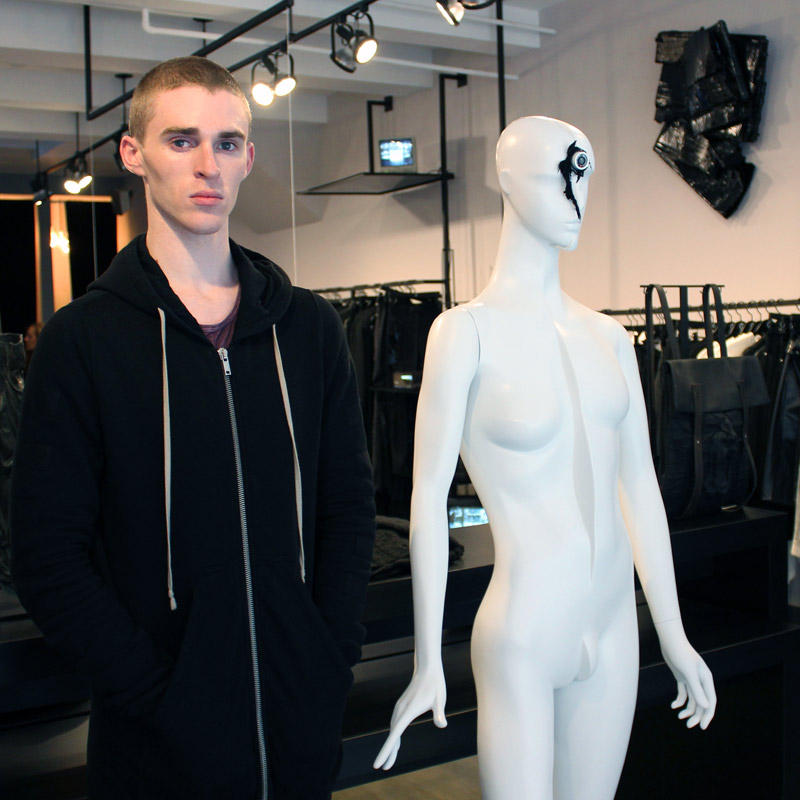

At just 21-years-old, designer, model and entrepreneur Judson Harmon confidently stands with two feet firmly planted within the ever-evolving fashion industry. After opening ØDD—a boutique and styling house in NYC’s Lower East Side neighborhood—in October 2012, Harmon continued to impress this past February during NYFW with the dramatic debut of ØDD’s namesake collection, which included FW13 womens and FW13 mens capsule collections. Brimming with conceptually-driven designs for “men, women and the inbetween,” the ØDD storefront stands to introduce Harmon’s own designs alongside a slew of avant-garde labels and arts-inspired jewelry designers both known and new. In addition to fashion-forward threads and accessories, the space is filled with revolving art installations, which currently include image-distorting video surveillance projections by Jason Akira Somma—who also created the ØDD FW13 campaign film—and cardboard sculptures by Gabriel J Shuldiner.
“I’ve been a fan of Shuldiner’s art for quite a while,” Harmon told us. “He’s a lot like us in the sense that he puts his pieces through a lot of treatments to get exactly what he wants.” To learn more about this treatment-based production process, what he looks for in fashion design and what just makes ØDD so different we recently caught up with Harmon during a rare moment of downtime.
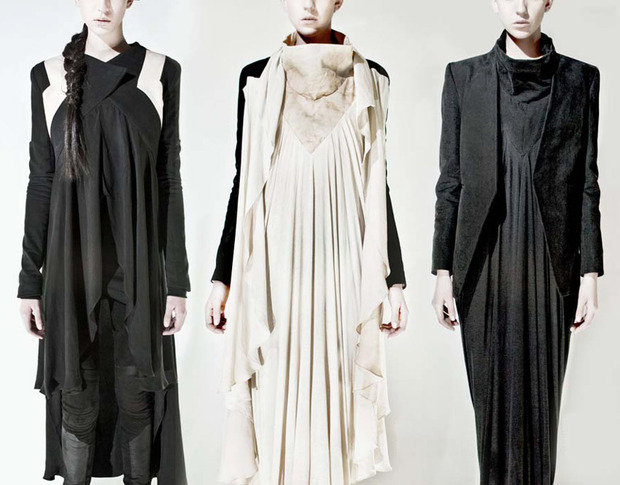
What is ØDD?
It’s essentially an amoeba. It sounds really strange, but we’re constantly changing, constantly growing and we’re constantly putting out new things. I always crave to have something exciting to tell. And it started from a perspective that fashion doesn’t really have gender. Fashion doesn’t have a gender, people have a gender. People make the choice about what they wear. So I don’t encourage my clients to dress any particular way.
That’s why we have our video installation in the entrance, so they see themselves in a different perspective when they walk through the door. Because most people when they look in the mirror criticize the hell out of themselves. So this is essentially looking in the mirror and looking at something fun.
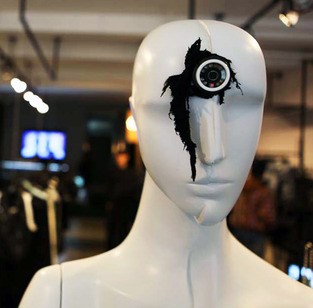

Why is texture so important to your own designs and to the other brands you carry in ØDD’s NYC storefront?
It’s really hard to find silhouettes that haven’t been done before, but it’s not hard to find textures that haven’t been done before. So you get a classic silhouette, but it’s unique in the way it feels and the way it looks to the eye. So it’s more of an updated version of something classic. And then every once in a while you will find a new silhouette and a new texture at the same time, and you’re just really lucky with that.
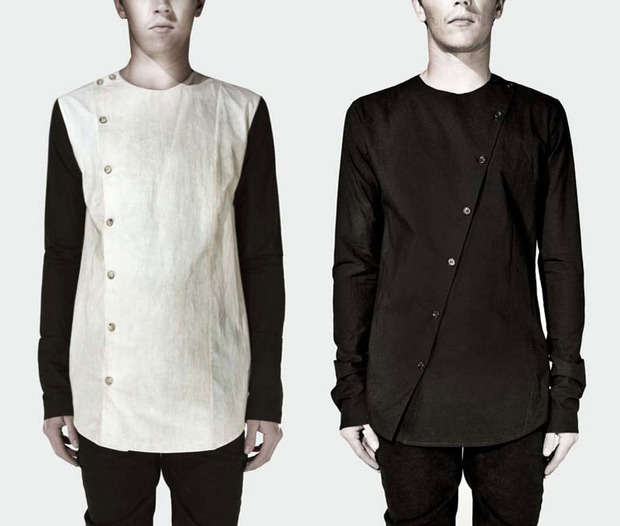
What kind of materials are you most interested in working with?
I love leather. And the new experimental leathers. I’ve been looking at leather alternatives for vegans too. I found a see-through leather alternative that’s completely clear. It’s made of polyurethane, but it has the texture of leather. It’s really interesting. I’m not sure how I would use it, but it’s amazing.
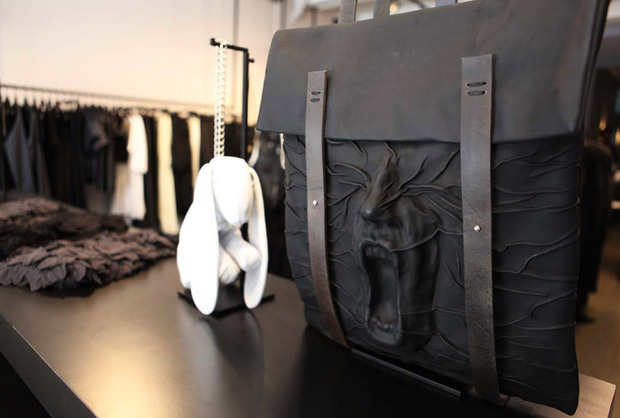
The textures you achieve are often as visual as they are physical. Tell us more about the garment treatments you’ve been using.
With the [FW13 collection] we got the leather and then did our own treatments. We like to take our fabrics the way we get them and really change them into something that’s really unique because anyone can go get the same fabric as you, but they can’t do the same treatment. The dragon blazer is oil stained, washed, dyed, and distressed—not necessarily in that order.

I want people wearing [my clothes] to look like they’ve been through a lot, because we all have.
When you do more than one treatment to a material it can either destroy it, or make it into something you’ve never seen before. And we were very lucky with that. Once it had gone through the dye process and the stain process, the distressing really just took it to a different texture. If you really look closely it has a sheen to it, but also a matte texture where it’s really been distressed.
So they’re more “experienced” looking?
Yes, and that’s the biggest thing that I take pride in with my clothes—I want people wearing them to look like they’ve been through a lot, because we all have.
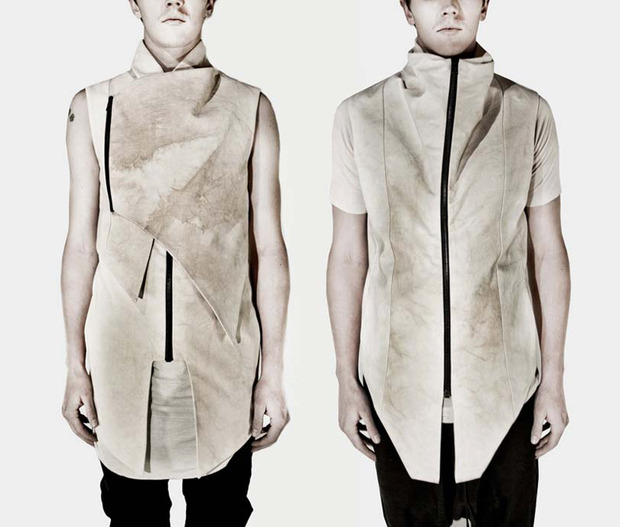
What’s the most interesting treatment and design used in your upcoming FW13 collection?
With some of the pieces from our next collection, we did a stain inspired by the discoloration of vintage book pages, like water stains over time. It’s like an old motel Bible—you’d open it up and be like “this has been through a lot.” We were told that it was impossible to do on leather, so we told them do it anyway. We took a very big monetary risk with that, but it worked. It was in our [2013 NYFW] show. We take a lot of risks to really keep ourselves progressive—if it hadn’t work I wouldn’t have used leather in the show.
We also did a jacket with a fully pleated leather zipper panel, all done by hand. It took about 12 hours of handwork on each jacket, and we did two of them for the show. And we’re doing them for production too. Thankfully for production we can machine pleat.
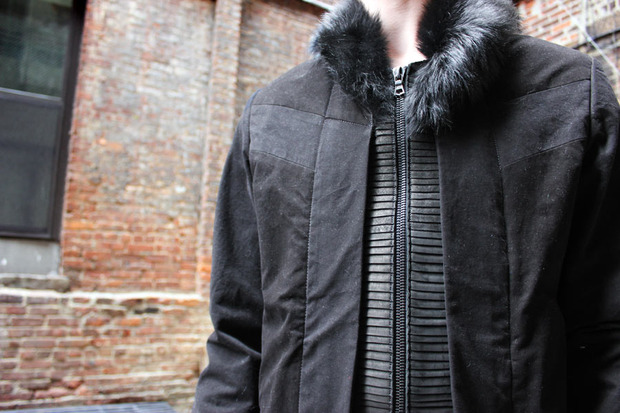
And you’re doing this all in LA?
Yeah, we produce in downtown LA. I’m very adamant about keeping my production in the United States. A lot of people don’t think that you can get cheaper prices domestically for production, so they all go to China. And personally, I take a lot of pride in making everything in the US.
Portraits by Graham Hiemstra, FW13 lookbook and store images by Jason Akira Somma












